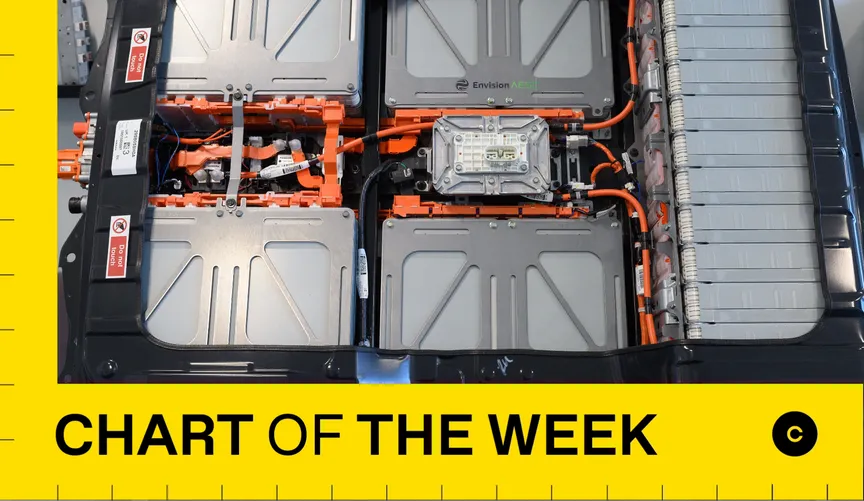
After a brief hiatus, lithium-ion battery prices are back to their regularly scheduled nosedive.
Throughout the 2010s, batteries got cheaper and cheaper, cheering the businesses and climate activists that want to convert vehicles to electric and bolster renewable power plants with flexible energy storage.
That march of progress slipped on the banana peel of Covid supply-chain disruptions: Price declines slowed in 2021, and prices went up in 2022, per the analysts at BloombergNEF. That’s the wrong direction for a technology that’s supposed to benefit from learning curves and increased scale.
But the Covid years were a strange time, and the global lithium-ion battery industry seems to have shaken off the malaise. Global pack prices fell 14% this year to a record low of $139 per kilowatt-hour, according to BNEF. Lithium prices softened, components got cheaper, and massive new battery factories opened up. Demand for batteries grew an astonishing 53% this year, but even that fell short of some manufacturers’ expectations, which pushed prices down further.
That $139 per kilowatt-hour figure is actually a blend of different batteries from several categories, like electric vehicles, stationary grid storage and buses. Electric vehicle packs, which have the most scale of the bunch, have already hit $128 per kilowatt-hour. This metric matters because batteries generate most of the cost of electric vehicles, so more affordable batteries mean more affordable EVs. And the cheaper grid storage gets, the easier it will be to shift renewable generation into the hours when the sun or wind aren’t available.
Just how cheap do battery packs need to get? At least for EVs, battery watchers have long described the $100-per-kilowatt-hour threshold as a mythic boundary past which cost-competitiveness would be assured. The U.S. Department of Energy staked out the further target of “$80 per kilowatt-hour manufactured cost for a battery pack by 2030 for a 300-mile range electric vehicle” in its 2020 Energy Storage Grand Challenge.
If prices continue to fall at roughly the pace they did this year, the industry will blow past $100 per kilowatt-hour in a handful of years — and DOE’s 2030 goal looks eminently achievable.
